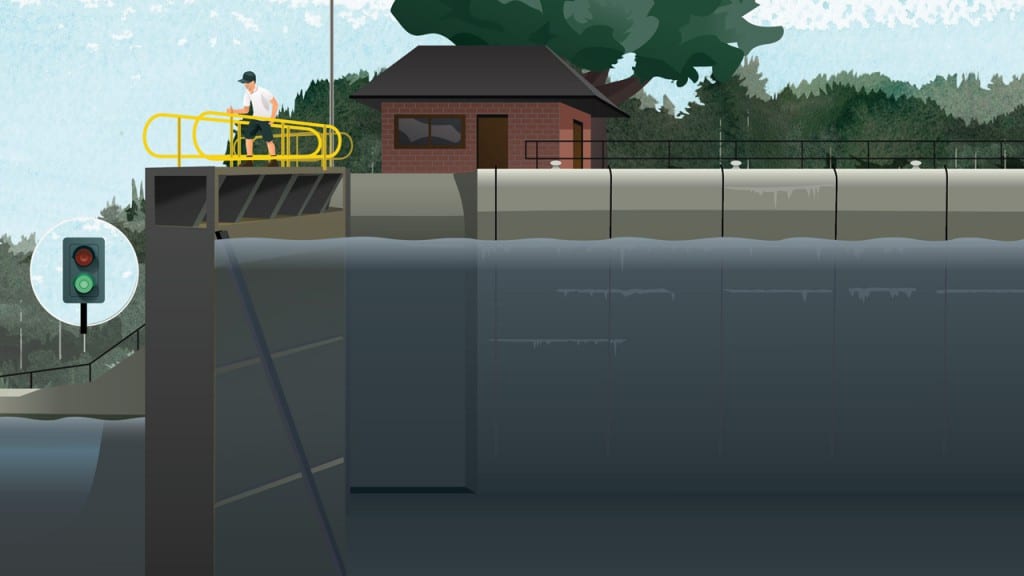Pennsylvania’s locks and dams are located on the Monongahela, Allegheny and Ohio rivers, in and near Pittsburgh.
Pennsylvania’s locks and dams are built and maintained by the U.S Army Corps of Engineers, and provide a means for passing vessels to navigate through the dams.
Entering and Exiting Pennsylvania’s Locks
When entering or exiting a lock the lockmaster is in control, and will provide a visual or audible signal for your boat to enter using a horn or light system. Boats will enter the lock in the following order, based on boat type, in order to maintain safe and efficient passage:
- Military craft
- Mail boats
- Commercial passenger craft
- Commercial tows
- Commercial fishermen
- Pleasure boats
Boats should stop at least 100 yards from the lock entrance before entering the lock, and can signal the lockmaster using one of the following:
- By sounding a long and short blast of the horn
- Using marine radio channel 13
- Using the sound signaling device located on the lock wall
Once the lockmaster has been signaled, the boat operator must stay clear of the lock until they are signaled to enter.
Fenders and mooring lines, a minimum of 75 feet in length, should be kept ready upon entering the lock. Once inside, the lock lines are adjusted with the water level.
Never tie a boat fast to the lock wall. Life jackets should always be worn when navigating locks and dams.


